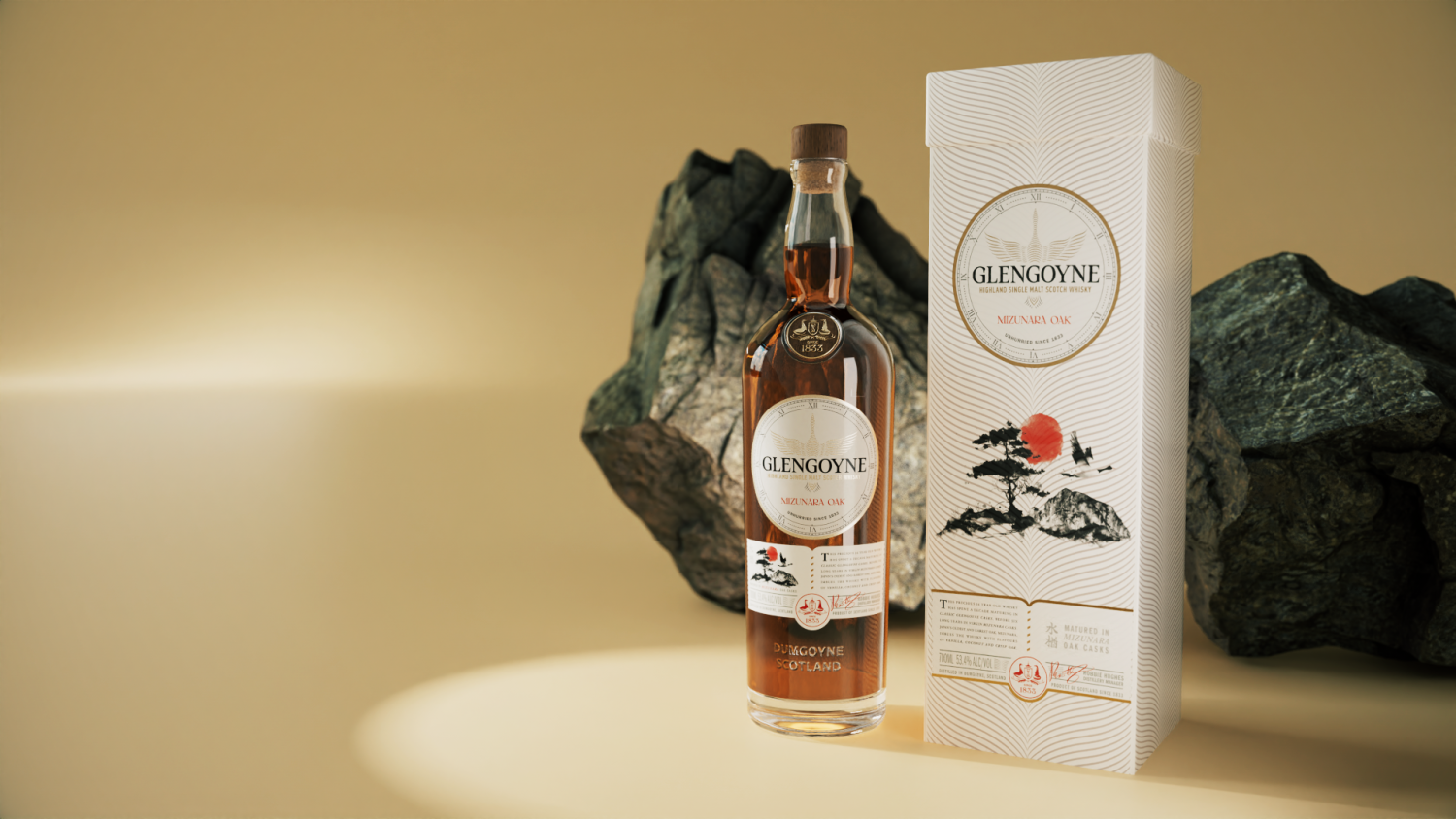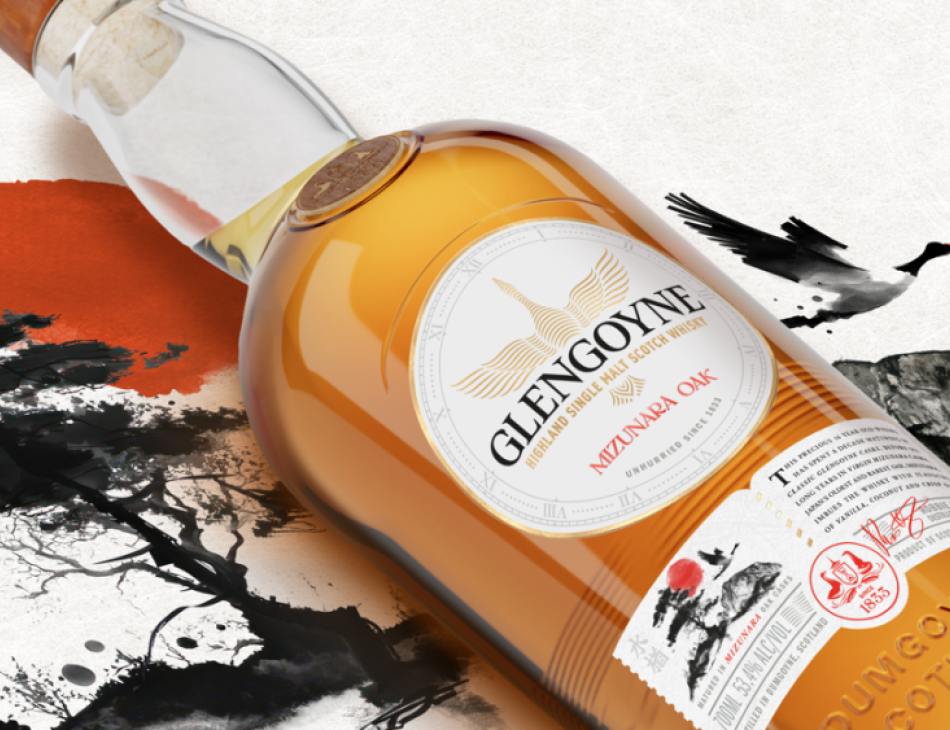Glengoyne Mizunara Oak: Patience Rewarded
Glengoyne Mizunara Cask
It’s not often that a whisky takes you from the Highlands of Scotland to the forests of northern Japan, all while sitting in Leicester Square. Yet that was the atmosphere at 8 at The Londoner Hotel, where Glengoyne unveiled its latest limited edition: the Mizunara Oak 16 Year Old. I love these tastings, as I got to see my friends, enjoy plates of Japanese inspired finger food, and have wonderful whisky and cocktails. I have been so busy recently that I almost pulled out, but am very pleased that I didn’t.
Glengoyne is no stranger to doing things differently. Founded in 1833, the distillery is known for its deliberately slow distillation, producing a spirit with signature orchard fruit character. Traditionally, that spirit has met sherry casks. But with the Oak Masters’ Series, Glengoyne has broadened its outlook. The first releases explored White Oak; the latest turns to one of the rarest casks in whisky: Japanese Mizunara.
This new release is a 16-year-old bottled at 53.4% ABV, limited to 3,195 bottles worldwide and priced at £300. It’s already a medal-winner, taking Double Gold at the 2025 International Spirits Challenge ahead of its official launch. I can see why - it was delicious.
Mizunara, often called “water oak,” grows mainly in Hokkaidō. The trees take centuries to mature, their trunks twisted and gnarled. The wood is porous and difficult to work with, making casks that leak and challenge even the most skilled coopers. But the reward for perseverance is unique. Over long maturation it reveals sandalwood, incense, coconut and subtle floral notes, flavours that have become hallmarks of some of Japan’s most revered whiskies.
Glengoyne’s approach combines patience with ambition. The whisky spent its first decade in a mix of first-fill sherry and refill casks, then a further six years in Mizunara. This is far longer than most finishes, and isn’t really a finish, but part of the maturation. I am not a whisky maker, but this tales skill and lots of experience to achieve the correct balance. I am happy to report that they have nailed it.
In the glass, the Mizunara Oak 16 opens with soft vanilla and sweet toffee, quickly joined by sandalwood and lemon zest. The palate moves from fleeting sweetness to warming spice, honey and a gentle woody dryness. Coconut and crisp green apple bring freshness.
The use of Mizunara oak in whisky began not as a choice but as a necessity. During the Second World War, Japan was cut off from imports of American white oak. Distilleries turned to native Mizunara, despite its reputation as a poor substitute. Early results were frustrating – casks leaked, maturation was slow, but over time, something remarkable emerged.
After two decades or more, whiskies from Mizunara began to show an ethereal profile: temple incense, sandalwood, coconut, delicate spice.
By the late 20th century, these flavours had become prized within Japan. As the global boom in Japanese whisky gathered pace, Mizunara’s reputation grew too, and today it is one of the rarest and most expensive woods in whisky production. Only around 200 casks are made each year, so how Glengoyne managed to attain 6 is impressive.
At the Londoner lunch, the Mizunara Oak was joined by another Oak Masters’ release: the 24-Year-Old White Oak. Matured mainly in ex-bourbon and virgin oak, it offered a great contrast. Bottled at 47.8% ABV, the 24 was creamy, tropical and less sherry-driven, yet still recognisably Glengoyne. It is one of my favourites.
As Gordon Dundas put it:
“We’ve always been celebrated for our sherry casks, but the Oak Masters’ Series lets us explore something new. It’s about flavour and imagination – showing the spirit in different guises.”
The 24-year-old drew plenty of praise. “Add a drop of water,” we were advised, “and you’ll find more sweetness, more creaminess, sometimes even tropical fruit.” Industry figures have also noted its quality. Shakinder Singh of The Whisky Exchange once declared it his standout whisky of a show.
Presentation is an important part of the Mizunara release. The bottle is housed in a box decorated with Japanese Sumi-e style illustrations: a sunset, a Mizunara oak tree, and Glengoyne’s geese. It’s a visual reminder of the East–West partnership at the heart of the whisky, and of the distillery’s environmental commitments. Glengoyne has long taken sustainability seriously. Just outside Glasgow, its distillery includes an on-site wetland reserve developed with the Wildlife and Wetland Trust. The system naturally cleans wastewater while supporting biodiversity, underlining Glengoyne’s reputation as one of Scotland’s greenest distilleries.
Collectors will move quickly for the 3,195 bottles. Drinkers, meanwhile, will find a dram that rewards contemplation. At £300 it sits firmly in the premium bracket, but measured against other Mizunara releases, the price is well judged.











